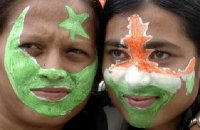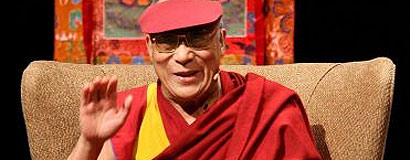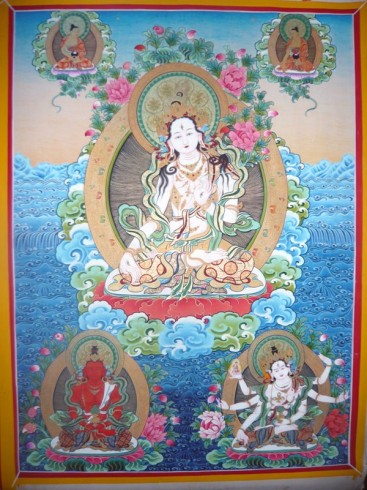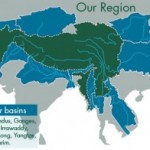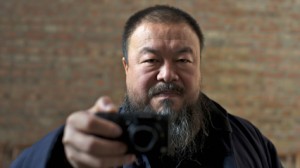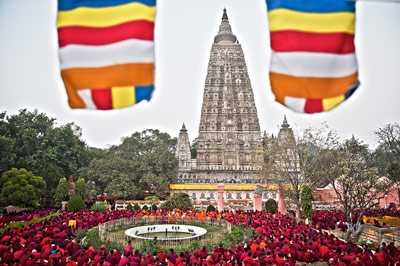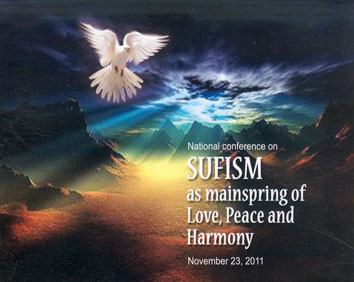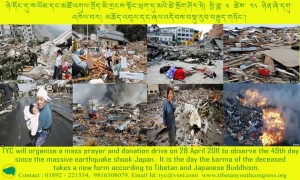Buddha, Meditation, Medicine
VipassanÄ Meditation
Executive chief of largest Buddhist sect refuses to resign soon despite corruption allegations https://t.co/4LumF3TfGk
â Yonhap News Agency (@YonhapNews) 13. August 2018
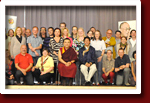
Dalai Lama stattet Österreich im Mai bisher längsten Besuch ab
Dalai Lama stattet Österreich im Mai bisher längsten Besuch ab. Der Dalai Lama wird im Mai zehn Tage in Österreich weilen und dem Land damit seinen bisher längsten Besuch abstatten. Das Oberhaupt der Tibeter reist nach Kärnten, Salzburg und Wien. Am Donnerstag wurde das Besuchsprogramm präsentiert.
Zum vierten Mal seit 1992 besucht das Oberhaupt der Tibeter Österreich, von 17. bis 26. Mai wird der Dalai Lama bleiben. Der Direktor des Tibetzentrums in Hüttenberg (Kärnten), Lama Geshe Tenzin Dhargye, präsentierte am Donnerstag in Wien gemeinsam mit dem Kärntner Landeshauptmann Gerhard Dörfler (FPK) das Besuchsprogramm.
Kärnten: âDie Kunst des Glücklichseinsâ
Den Auftakt des Dalai Lama-Besuchs stellt ein Treffen mit den Schülern des Tibetzentrums in Hüttenberg, dar. An den darauffolgenden zwei Tagen stehen dann in der Klagenfurter Messehalle âbuddhistische Unterweisungenâ auf dem Programm. Am 20. Mai wird am selben Ort ein Vortrag unter dem Titel âDie Kunst des Glücklichseinsâ stattfinden. Ein Thema, das dem Dalai Lama laut Geshe Dhargye besonders am Herzen liegt: âSeine Heiligkeit glaubt, dass es notwendig ist, eine Spiritualität zu schaffen, die von allen Menschen â egal ob gläubig oder nicht â angenommen werden kann. Aus dieser können dann jene menschlichen Werte entstehen, die eine Schlüsselrolle auf dem Weg zum Glücklichsein einnehmen.â
Salzburg: Internationale Flüchtlingsproblematik im Mittelpunkt
Anschließend geht die Reise weiter nach Salzburg, wo beim Besuch in der Salzburgarena das Thema âWeltfrieden und universelle Verantwortungâ im Mittelpunkt steht. Vor allem die internationale Flüchtlingsproblematik soll dabei behandelt werden, sagte Ernst Löscher, Direktor der Flüchtlingshilfeorganisation âAlpine Peace Crossingâ (APC), der die Vorträge in Salzburg mit organisierte. Denn: âDer Dalai Lama ist wahrscheinlich der prominenteste Flüchtling, den es gibt.â Am Nachmittag wird der Dalai Lama mit dem Salzburger Erzbischof Alois Kothgasser, der evangelischen Superintendentin Luise Müller, dem Präsidenten der islamischen Glaubensgemeinschaft Fuat Sanac und dem Wiener Gemeinderabbiner Schlomo Hofmeister zusammentreffen und mit ihnen über die Möglichkeit religiöser Harmonie in Zeiten der Globalisierung diskutieren.
Wien: Berührungspunkte zwischen Wissenschaft und Buddhismus
In der Wiener Stadthalle hält das tibetische Oberhaupt dann am 25. Mai einen Vortrag unter dem Titel âJenseits von Religion â Ethik und menschliche Werte in der heutigen Gesellschaftâ. Den Abschluss wird am 26. Mai das wissenschaftlich-religiöse Symposium âGeist und Materie – neue Modelle der Realitätâ an der Universität Wien bilden. Gemeinsam mit den Quantenphysiker Anton Zeilinger, einem langjährigen Freund des buddhistischen Oberhauptes, und weiteren führenden Wissenschaftlern aus Physik, Neurowissenschaft und Philosophie wird der Dalai Lama über Berührungspunkte zwischen Wissenschaft und Buddhismus diskutieren.
Previous articles #dalai lama #tibet #humanrights
http://religion.orf.at/projekt03/news/1204/ne120426_dalailama.html
(APA)
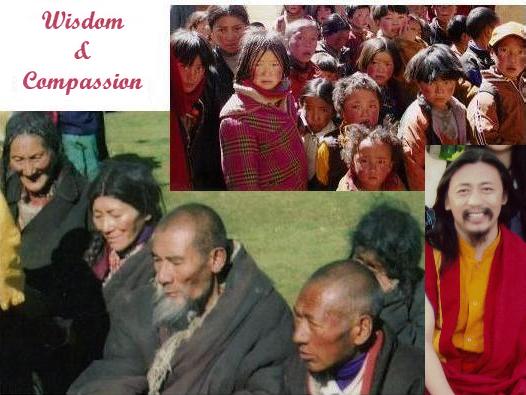
Freedom of Religion & Belief – China: Tibetan Monasteries Placed Under Direct Rule
Tibetan Yoga Center – Yoga Retreats
Contact: tibetanyogainfo@gmail.com
www.bhutanzopa.com.bt/AdventureTravel
The practice of Yoga is intimately connected to the religious beliefs and practices of both Buddhism and Hinduism. However there are distinct variations in the usage of yoga terminology in the two religions. In Hinduism, the term „Yoga“ commonly refers to the eight limbs of yoga as defined in the Yoga Sutras of Patanjali, written some time after 100 BCE, and means „yoke“, with the idea that one’s individual atman, or soul, would yoke or bind with the monistic entity which underlies everything (brahman). In the Vajrayana Buddhism of Tibet, however, the term „Yoga“ is simply used to refer to any type of spiritual practice; from the various types of tantra (like Kriyayoga or Charyayoga) to ‚Deity yoga‘ and ‚guru yoga‘. In the early translation phase of the Sutrayana and Tantrayana from India, China and other regions to Tibet, along with the practice lineages of sadhana, codified in the Nyingmapa canon, the most subtle ‚conveyance‘ (Sanskrit: yana) is Adi Yoga (Sanskrit). A contemporary scholar with a focus on Tibetan Buddhism, Robert Thurman writes that Patanjali was influenced by the success of the Buddhist monastic system to formulate his own matrix for the version of thought he considered orthodox. Read More: HERE
Early Buddhism incorporated meditative absorption states. The most ancient sustained expression of yogic ideas is found in the early sermons of the Buddha. One key innovative teaching of the Buddha was that meditative absorption must be combined with liberating cognition. The difference between the Buddha’s teaching and the yoga presented in early Brahminic texts is striking. Meditative states alone are not an end, for according to the Buddha, even the highest meditative state is not liberating. Instead of attaining a complete cessation of thought, some sort of mental activity must take place: a liberating cognition, based on the practice of mindful awareness. The Buddha also departed from earlier yogic thought in discarding the early Brahminic notion of liberation at death. Liberation for the Brahminic yogin was thought to be the realization at death of a nondual meditative state anticipated in life. In fact, old Brahminic metaphors for the liberation at death of the yogic adept were given a new meaning by the Buddha; their point of reference became the sage who is liberated in life. Read More: HERE
Dream Yoga or Milam (T:rmi-lam or nyilam; S:svapnadarĹana)â the Yoga of the Dream State are a suite of advanced tantric sadhana of the entwined Mantrayana lineages of Dzogchen (Nyingmapa, Ngagpa, Mahasiddha, Kagyu and Bönpo). Dream Yoga are tantric processes and techniques within the trance Bardos of Dream and Sleep (Tibetan: mi-lam bardo) and are advanced practices of Yoga Nidra. Aspects of Dream Yoga sadhana are subsumed within the practice suite of the Six Yogas of Naropa. Read More: > HERE <
Tibetan yoga center was established to provide a program of study and practice in the Tibetan Buddhist (Vajrayana) tradition that would integrate the essence of these teachings and present them in a suitable way for practitioners in the West. The program combines the core practices relying on visualizations, yoga of channels, winds and drops, and insight into the nature of the mind (rigpa) for efficient progress on the path. The core teachings of Tibetan Yoga Center are ‚The yogas of the six bardos‘ of the Nyingma lineage of Tibetan Buddhism, summarized in the curriculum as seven courses (see the program section). The founder and master teacher of the center, Khenchen Lama Rinpoche, was at numerous occasions encouraged by his teachers to focus on helping Western students, particularly through these practices. To help bring these teachings closer to the background of Western practitioners, the program of the Tibetan Yoga Center also integrates elements of Western neuroscientific research on changes in behavior, mind and brain as a result of meditation. Building on the tradition of enlightened householder yogis in Tibet, the program of the center was developed for yogis of the current era – serious practitioners leading busy lives with work and family commitments who want to bring their spiritual practice to swift fruition to fully benefit sentient beings.
Tibetan Yoga Center operates on principles of a social business, offering teachings mostly by suggested donation and for minimal possible fees to cover expenses. The aim of the Tibetan yoga of mind is to develop universal loving kindness and compassion coupled with the ultimate wisdom of the nature of phenomena, the ultimate truth. At the basic level of achievement, one wishes happiness for oneself as well as other people.
At the medium level of achievement one realizes that the source of ultimate happiness is the understanding of the true nature of phenomena. One realizes that the most profound way to benefit sentient beings is to achieve enlightenment and works very hard towards this goal. On this path, one completely purifies his/her mental afflictions – anger, attachment, ignorance, jealousy and pride. The highest level of achievement in the Tibetan yoga of mind is the experiential understanding of our own Buddha nature – the deepest level of the mind. When one continuously sustains this realization in his/her mind stream, s/he becomes the embodiment of the union of primordial wisdom and compassion, and benefits sentient beings in limitless ways. This achievement is the essence of the Tibetan yoga and the deepest meaning of the term ’naljor‘.
TYPES OF YOGA IN TIBETAN BUDDHISM – There are six yanas (modes of spiritual practice) in Vajrayana: 1. Kriyayana, 2. Upayana, 3. Yogayana, 4. Mahayoga, 5. Anuyoga, and 6. Atiyoga. In Nyingma lineage, the main focus of practice is on Mahayoga, Anuyoga and Atiyoga.
Teaching and Practice Downloads: This section contains general teachings given by teachers of the Tibetan Yoga Center at various occasions as well as specific teachings that are part of the curriculum of the center. These teachings are available for free, but proper reference to the teachings if used as part of other materials should be included.
Previous some related #articles #videos:
Mountain Minorities and Indigenous Peoples
Yoga of Himalayas â Nuns & Communities
The Ninth Mandaean Camp Niagara Falls
UNESCO â The Tradition of Vedic Chanting
UN – Nagoya biopiracy agreement ‚is unexpected success‘
Saving the Bedouin Heritage and Biodiversity
A Call for Renewable Energy in Brazil – Belo Monteďťż
Indigenous Australien Medicine – Bush Medicine
Build Hope â Sivananda Sevashram
ARGAN TREE – Argan Oil Morocco
Jain Tradition – Mahavir Jayanti India
Monasteries Environmental Himalayaprotection
Monks lead march to save Himalayas
Interfaith Center: Gala Dinner with Yusuf Islam
Gilgit (UNESCO Gilgit Manuscripts) Baltistan – National Conference Sufism
BahĂĄâĂ â Religion für eine neue Zeitďťż
Introduction – Swami Vivekananda – Jnana Yoga
The Hindu approach to spiritual evolution leading to liberation or moksha or Self-realization is one of the four major paths or yogas:
-
the path of knowledge or Jnana yoga,
-
the path of mind control or Raja Yoga ,
-
the path of devotion of Bhakti yoga and
-
the path of action/work or Karma yoga.
#video Swami Vivekananda 1893 Speech at Parliament of Religions Part 1 of 4
Swami Vivekananda was the chief disciple of the 19th century saint Ramakrishna Paramahansa and the founder of the Ramakrishna Math and the Ramakrishna Mission. He is considered a key figure in the introduction of Indian philosophies of Vedanta and Yoga to the „Western“ world, mainly in America and Europe and is also credited with raising interfaith awareness, bringing Hinduism to the status of a major world religion during the end of the 19th century CE. Vivekananda is considered to be a major force in the revival of Hinduism in modern India.
He is perhaps best known for his inspiring speech which began: „Sisters and Brothers of America,“ through which he introduced Hinduism at the Parliament of the World’s Religions in Chicago in 1893.
The Council for a Parliament of the World’s Religions works to cultivate harmony among the world’s religious and spiritual communities to achieve a just, peaceful and sustainable world.
The first Parliament of Religions was held at the 1893 Chicago Columbian Exposition, and was the first formal meeting of the religious East and West. In 1988 the Council for a Parliament of the World’s Religions (CPWR) was founded to organize a centennial celebration of the original Parliament. Since 1993, three Parliaments have been held in Chicago, Cape Town, Barcelona and in 2009 the most recent Parliament was held in Melbourne, Australia.
Dr. Joachim Reinelt: Zur Zeit des indischen Mittelalters wanderten in weiten Teilen Indiens und Tibets tantrische Mystiker umher, die Nathas, Nathayogis oder Nathasiddhas genannt wurden. Sie praktizierten und lehrten Hatha- und Kundaliniyoga und hatten großen Einfluss auf das religiöse Leben der Menschen.
Gorakshanatha Saivism: Gorakhnath or Gorakshanatha Saivism is also known as Siddha Siddhanta and Nath tradition. It was founded by Gorakshanatha (Gorakhnath) who lived about 10th century AD. He is believed to be 3rd, 4th or 5th in a line of 12 prominent teachers of this tradition, which has followers in both Buddhism and Hinduism.
He was said to be a disciple of Matsyendranatha who was from in Nepal. Followers of this sect believe that knowledge of this tradition was received by Matsyendranath directly from Siva himself. Gorakshanatha is credited with such works as Siddha Siddhanta Paddhathi and Viveka Martanda. He composed them in Hindi. He also created 12 monastic orders across Northern India in an effort to preserve the Adinatha tradition. Other important works of this tradition are Hathayoga Pradipika, Gheranda Samhita, Siva Samhita and Jnanamrita.
History of the Nathas – The history of ancient Indian sadhu texts reveals a succession of several main groups. There were the Sadhs, Yatis, Siddhas, Nathas, Pashupatis, Sant-Mats, Dasnamis and Nagas. Apart from these, many small sadhu sects have existed and played their part in the great stream of Indian life. In early history, it would appear that some sects were interwoven with others, and some merged or developed into other sects. Some thus became extinct, and others are still with us.
Full Article: http://www.saivism.net
http://www.facebook.com/parliamentofreligions
http://en.wikipedia.org/wiki/Swami_Vivekananda
Bhutan http://en.wikipedia.org/wiki/Gross_national_happiness
UN – The Challenge of Human Rights and Cultural Diversity
UNESCO – Intangible Cultural Heritage
UN – Nagoya biopiracy agreement ‚is unexpected success‘
http://www.twnside.org.sg/title2/books/The.Road.to.an.Anti-Biopiracy.Agreement.htm
Amnesty International –Â What are economic, social and cultural rights?
*************************************
China: Tibetan Monasteries Placed Under Direct Rule
(New York) – The Chinese government has ended a key policy of allowing Tibetan monasteries to be run by monks who comply with government regulations and have instead introduced a system that will place almost every monastery in Tibet under the direct rule of government officials who will be permanently stationed in each religious institution, Human Rights Watch said today.
The new system now requires an unelected „Management Committee“ – also referred to as zhusi danwei/gongzuozu („monastic government work-unit“)- to be established in every monastery, with up to 30 lay officials stationed in each monastery, depending on the size of the institution, according to a February 15, 2012 article in the government-run Global Times. The new „Management Committees“ will run the monasteries and will have authority over the previous „Democratic Management Committees,“ which will now be responsible for rituals and other matters.
The freedom to leave or discontinue membership in a religion or religious group âin religious terms called „apostasy“ âis also a fundamental part of religious freedom, covered by *Article 18 of the Universal Declaration of Human Rights.[2]
Freedom of religion is a principle that supports the freedom of an individual or community, in public or private, to manifest religion or belief in teaching, practice, worship, and observance; the concept is generally recognized also to include the freedom to change religion or not to follow any religion.[1]
#video Meeting with Special Rapporteur on Freedom of Religion or Belief, Heiner Bielefeldt As always saying something on the topic of freedom of religion or belief, to say it again, the most shocking experience when dealing with case of violations of freedom of religion is the extreme manifestation and degree of hatred “ http://www.youtube.com/watch?v=81qyyKzntJw
http://www.hreoc.gov.au/human_rights/religion/index.html
http://en.wikipedia.org/wiki/Freedom_of_religion
http://www.ohchr.org/EN/Issues/FreedomReligion/Pages/FreedomReligionIndex.aspx
February 29, 2012
Australian Broadcasting Corporation – Exiled PM wants ‚fact finding‘ mission in Tibet
March 3, 2012
UN Human Rights Chief asked when she would visit Tibet
Mar 6, 2012
UN calls on China to stop forced settlement of Tibetan Nomads
8 March 2012
âUnfinished progressâ â UN expert examines food systems in emerging countries reports* on China, Mexico and South Africa to the Human Rights Council. In China, local-level authorities often have allowed land-grabbing at the expense of poor rural households. And between 50 and 80 per cent of the 2.25 million nomads on the Tibetan plateau may be relocated into settlements close to rural cities, overhauling the food and farming practices of this vulnerable community as part of a programme to abandon nomadic life and modernize agriculture. ( Latest Water UN Report – World Consumption of modern agriculture on fresh water by 70% )
chinadialogue Tibetan herders are struggling to adjust to sedentary life on the edge of the city of Golmud. Xia Liwei visited one family and listened to their story. http://www.chinadialogue.net/–Who-are-these-people-now
chinadialogue As China seeks to protect a delicate corner of Qinghai, 50,000 herders have been moved off the grasslands. Ill-prepared for urban life, they face a bleak future, write Guan Guixia and Suonan Wangjie. http://www.chinadialogue.net/–Hard-times-for-eco-migrants
TIBETAN NOMADS Tibetan herder with a yak Nomadic herders are known as drokpa. They make up about 25 percent of Tibetans in Tibet. In some Tibetan counties they make up 90 percent of the population. http://factsanddetails.com/china.tibetan nomads
âObesogenicâ food systems & Right to food in emerging countries
OLIVIER DE SCHUTTER
U.N. SPECIAL RAPPORTEUR
ON THE RIGHT TO FOOD
Newsletter 12 March 2012
Here is the latest news from the United Nations Special Rapporteur on the Right to Food, Olivier De Schutter. You will find more information on our website.
In the spotlight
âObesogenicâ food systems must be reformed
âThe West is exporting diabetes and heart disease to developing countries, along with the processed foods that line the shelves of global supermarkets,â warned the Special Rapporteur, calling for an urgent response to the public health disaster of poor nutrition.
On March 6th the UN expert presented an official report, entitled âThe right to an adequate diet: the agriculture-food-health nexusâ to the UN Human Rights Council.
Instead of medicalizing diets, we must tackle the systemic problems that generate poor nutrition in all its forms, he urged, calling for the taxation of unhealthy products, regulation of foods high in saturated fats, salt and sugar and the way they are marketed, reform of wrong-headed agricultural subsidies, and support for local food systems.
Read the press release or the report and recommendations.
âUnfinished progressâ
â UN expert examines food systems in emerging countries
[8 March 2012] GENEVA â âThe food systems of emerging countries are at a major crossroads. Millions of people have been lifted out of poverty, yet whole communities have been left behind,â warned Olivier De Schutter, the United Nations Special Rapporteur on the right to food, after presenting his reports* on China, Mexico and South Africa to the Human Rights Council.
âAs many as 19 million Mexicans and 12 million South Africans remain food insecure, and Chinaâs rural dwellers are up to six times poorer than urban populations,â the expert said, calling on emerging countries to act now to lay the foundations for fair and sustainable food systems by implementing the following actions:
Mr. De Schutter urged emerging economies to protect the rights of land users, especially minority and vulnerable groups, and to establish in law the right to food, so it can be rapidly translated it into national strategies and institutions. He also advised supporting smallholder agriculture in the face of mega-development projects, and stopping soil and water degradation through a massive shift to agroecological practices. Likewise, the UN expert suggested the adoption of a strategy to tackle rising obesity.
| Read more… |
âEmerging countries face the huge task of feeding fast-growing populations whose increasing wealth is exerting new pressures on scant resources. They must secure and strengthen their food production bases as a matter of urgency; and they will only do so by working with farmers and their organizations, rather than against them,â he urged.
END
(*)Check the reports:Â China, Mexico and South Africa.

FOOD: WTO „must address“ food security
UPDATE 30.01.2012Â Haircut Negotiations – Hedge Funds Bet on Profits from Greek Debt Talks SPIEGEL ONLINE – http://www.spiegel.de/international/topic/debt_crisis
The negotiations over the Greek debt haircut are becoming increasingly suspenseful, with euro-zone finance ministers and the IMF pushing investors to accept greater losses. Hedge funds, more than any others, stand to profit, and are betting that the voluntary debt rescheduling will fail. By Stefan Kaiser http://www.facebook.com/spiegelinternational
Coming Events:
7 February 2012: European Economic and Social Committee sustainability conference
Olivier De Schutter will address Workshop 1, entitled „food, water and energy for everyone“, held between 4.30 and 6.00 pm, of the Conference of the European Economic and Social Committee (EESC) Go sustainable, be responsible! European civil society on the road to Rio+20.
30 January 2012: No enough food, energy for World as population increases: U.N. report | Morocco World News http://moroccoworldnews.com
30 January 2012: With new blueprint in hand, Ban calls for action to chart more sustainable future http://www.un.org/apps/news/sustainable development
http://www.irinnews.org/Report WTO
http://www.ourworldisnotforsale.org/
“ Trade and food security is in effect a WTO issue, and so there is great frustration within the UN that this enormously restricts the role of, for example, the Food and Agriculture Organization-based Committee on Food Security „
Olivier de Schutter, UN Human Rights Councilâs Special Rapporteur on the Right to Food, says: âFood security is the elephant in the room, which WTO [the World Trade Organization] must addressâ, pointing out that food import bills had soared by a third for poor countries this year.
WTO defending an outdated vision of food security [16 December 2011] Geneva â „Globalization creates big winners and big losers. But where food systems are concerned, losing out means sinking into poverty and hunger. A vision of food security that deepens the divide between food-surplus and food-deficit regions, between exporters and importers, and between winners and losers, simply cannot be accepted.
Food security hostage to trade in WTO negotiations: UN right to food expert [16 November 2011] Geneva â „The world is in the midst of a food crisis which requires a rapid policy response. But the World Trade Organisation (WTO) agenda has failed to adapt, and developing countries are rightly concerned that their hands will be tied by trade rules.â
Is the Doha round delivering on poverty?
Food aid on the back burner as WTO talks collapse
Some issues WTO needs to address in agriculture:
Ceilings on subsidies: Current ceilings on how much the US and the EU can spend on subsidies that distort trade are still rather high
Cotton subsidies: The US has still not fully complied with a WTO ruling in 2009 to remove subsidies for its cotton producers. African farmers could have gained from a 3.5 percent average increase in world cotton prices, if the US had cut subsidies.
Biofuel Subsidies : Not covered yet. A new study found that US ethanol subsidies may have artificially inflated maize prices by as much as 17 percent in 2011. Source: ICTSD
Some Further Sources such as http://www.un.org/en/documents/udhr/index.shtml
Read http://www.srfood.org/ Press release, „Eco-Farming Can Double Food Production in 10 Years, says UN Report“, 8 March 2011.
FARMAfrica FARM-Africa http://www.farmafrica.org.uk
Research by American Prof of International Development shows that small farms in Africa could be the solution to hunger http://www.stanforddaily.com/2012/01/13/
http://www.righttofood.org/ http://en.wikipedia.org/Right_to_food
http://cesr.org/index.php Center for Economic and Social Rights
http://www.facebook.com/World Fair Trade Organization (WFTO)
The G20 & Food Security â missing the big picture? World Trade
https://www.facebook.com/boellstiftung
http://www.business-humanrights.org/Categories/Issues/Other/Righttofood
http://www.stwr.org/imf-world-bank-trade/
http://en.wikipedia.org/wiki/Millennium_Development_Goals
http://donttradeourlivesaway.wordpress.com/
http://www.oaklandinstitute.org/issues
http://www.ourworldisnotforsale.org/en/signon/stop-wto-s-doha-development-round-and-other-FTAs
The right to food, and its variations, is a human right derived from the International Covenant on Economic, Social and Cultural Rights (ICESCR). The UN Special Rapporteur on the right to food in 2002 defined it as follows: http://en.wikipedia.org/wiki/Right_to_food
http://www.amnesty.org/en/economic-social-and-cultural-rights
Join the energy [r]evolution! http://www.energyblueprint.info/ The report: âEnergy [R]evolution: A Sustainable World Energy Outlookâ, provides a detailed practical blueprint for cutting carbon emissions while achieving economic growth by replacing fossil fuels with renewable energy and energy efficiency. This phase-out of fossil fuels offers substantial benefits such as energy security, independence from world market fuel prices as well as the creation of millions of new green jobs.

Celebrate the 2012 Sundance Film Festival From Anywhere
http://www.sundance.org/festival
http://www.sundance.org/stories/blog
http://www.sundance.org/programs/native-film
âStorytellers broaden our minds: engage, provoke, inspire, and ultimately, connect us.â
âRobert Redford, President and Founder
The Sundance Film Festival is a film festival that takes place annually in Utah, in the United States. It is the largest independent cinema festival in the United States. HERE
Charity biography #433 Robert Redford has addressed environmental issues in documentaries and film for over 30 years. Read more: http://www.looktothestars.org/celebrity/443-robert-redford
Sundance Institute is a nonprofit organization dedicated to the discovery and development of independent artists and audiences. Through its programs, the Institute seeks to discover, support, and inspire independent film and theatre artists from the United States and around the world, and to introduce audiences to their new work.
Since 1981, Sundance Institute has evolved to become an internationally-recognized nonprofit organization that actively advances the work of risk-taking storytellers worldwide. Originally founded by Robert Redford in the mountains of Sundance, Utah, Sundance Institute has always provided a space for independent artists to explore their stories free from commercial and political pressures. By providing year-round creative and financial support for the development of original stories for the screen and stage, Sundance Institute remains committed to its mission to discover and develop independent artists and audiences across the globe.
#VIDEO 2012 Festival Kickoff http://www.youtube.com/sff
Sundance Film Festival Director John Cooper, and Director of Programming Trevor Groth, share some of the great things about to happen at the 2012 Sundance Film Festival.
Artist Programs
http://www.sundance.org/programs/
Through year-round support, including a series of Labs and Fellowships for screenwriters, directors, documentarians, producers, composers, and theatre artists, the Institute’s artist programs have supported more than 5,000 artists and their films.
Feature Film
The longest-running of Sundance Institute’s artist development programs, the Feature Film Program (FFP) was founded in 1981 and has since supported more than 500 independent filmmakers whose distinctive, singular films have engaged audiences worldwide. We hope to embrace the unique vision of each filmmaker we support and encourage a rigorous creative process with a focus on original storytelling. Led by Michelle Satter, each year the Program advances the work of as many as 65 emerging filmmakers from the U.S. and around the world through a year-round continuum of support from development, to production and postproduction, all the way through to festival strategy and creative marketing/distribution.
#video http://www.aiweiweineversorry.com
http://filmguide.sundance.org/ai_weiwei_never_sorry
Ai Weiwei is China’s most famous international artist, and its most outspoken domestic critic. Against a backdrop of strict censorship and an unresponsive legal system, Ai expresses himself and organizes people through art and social media. In response, Chinese authorities have shut down his blog, beat him up, bulldozed his newly built studio, and held him in secret detention.
AI WEIWEI: NEVER SORRY is the inside story of a dissident for the digital age who inspires global audiences and blurs the boundaries of art and politics. First-time director Alison Klayman gained unprecedented access to Ai while working as a journalist in China. Her detailed portrait provides a nuanced exploration of contemporary China and one of its most compelling public figures.
http://www.financialtaskforce.org/2011/12/07/an-artists-stand
Ai Weiwei is known for many thingsâgreat architecture, subversive in-your-face art, and political activism. He has also called for greater transparency on the part of the Chinese state. Director Alison Klayman chronicles the complexities of Aiâs life for three years, beginning with his rise to public prominence via blog and Twitter after he questioned the deaths of more than 5,000 students in the 2008 Sichuan earthquake. The record continues through his widely publicized arrest in Beijing in April of 2011. As Ai prepares various works of art for major international exhibitions, his activism heats up, and his run-ins with Chinaâs authorities become more and more frequent.
In this unprecedented look at Ai and those close to him, Klaymanâs camera captures his forthrightness and unequivocal stance. She gives a larger picture of the artist as an individual, a symbol of Chinaâs oppression, and a powerful voice against a country that still denies its citizens many basic freedoms. – K.Y.
http://www.sundance.org/filmforward/destinations
http://www.sundance.org/filmforward/destination/china-2012/
Sundance Spotlights Spaceyâs Wall Street Boss,
Al Pacinoâs Cop
http://www.bloomberg.com/news/2012-01-17/austerity-wrong-way-to-fight-eu-crisis-stiglitz.html
Two movies about the *financial crisis — a drama starring Kevin Spacey and a documentary featuring Nobel Prize-winner Joseph Stiglitz — will be showcased at the Sundance Film Festival opening today in Utah.
On China, Stiglitz said an easing in its economic expansion to 7 percent to 8 percent is in some sense probably a âgood thing.â He later told reporters at a Hong Kong briefing growth in the worldâs second-largest economy is now more âsustainable.â
http://genevalunch.com/blog/2011/11/29/swiss-chinese-free-trade-good-progress-made
http://en.wikipedia.org/wiki/List_of_bilateral_free_trade_agreements
Not to be confused with Free market or Fair Trade. http://en.wikipedia.org/wiki/Free_trade
In âMargin Call,â Spacey plays an executive at a troubled Wall Street investment firm during the early days of the economic meltdown. âThe Flaw,â directed by British filmmaker David Sington, explores the causes of the crisis through interviews with leading economists, Wall Street insiders and victims of the Great Recession.
Celebrate the 2012 Sundance Film Festival From Anywhere
Digital Initiatives Bring the Festival to You!
Livestream Events â Exclusive Online Content âSocial Media
We’re working to improve your experience on our site. Please click to offer your feedback.
http://www.sundance.org/video/live/ LIVE Streaming
http://www.facebook.com/sundance
http://twitter.com/sundancefest
Live Webcasts from the Kalachakra Teaching
There will be live webcasts from the Kalachakra Teaching in Bodh Gaya, Bihar, India, from January 1-10, 2012. His Holiness the Dalai Lama will be teaching in Tibetan and there will be live webcasts in English, Chinese, Russian and Tibetan languages.
All times Indian Standard Time (GMT+5.30)
January 1: Short Teaching
His Holiness will give a short teaching.
Time: 1:00pm – 3:00pm
January 4-6: Preliminary Teachings
His Holiness will give preliminary teachings on Kamalashila’s „The Middling States of Meditation (gomrim barpa)“, Gyalsey Thokme Sangpo’s „37 Practices of A Bodhisattva (laklen sodunma)“, Geshe Langri Thangpa’s „Eight Verses of Training the Mind (lojong tsik gyema)“, Nagarjuna’s „The Praise to the World Transcendent (jigten ley deypar toepa)“ and Khunu Lama Tenzin Gyaltsen’s „The Precious Lamp in Praise of Bodhicitta (jangchup sem kyi toepa rinchen drolma)“.
Times: 1:00pm – 3:30pm each day
January 10: Long life empowerment and offering
A long life empowerment (tsewang) and a ceremony offering prayers for the long life of His Holiness the Dalai Lama will be performed.
Time: 9:00am – 11:00am (approximate time)
January 10: Ceremony honoring His Holiness the Dalai Lama
There will be a public felicitation ceremony for His Holiness.
Time: 1:30pm – 3:00pm
Live English language webcast can be viewed here.
Live Chinese language webcast can be viewed here.
Live Russian language webcast can be viewed here.
Live Tibetan language webcast can be viewed here.
More information and a full schedule of events at:
http://www.kalachakra2012.org/
http://www.facebook.com/DalaiLama
For times in your region 1:00pm Indian Standard Time (IST) on January 1st in India is the same as 7:30am on January 1st in London, England.
http://tibetanyouthcongress.org
http://wiki/List_of_organizations_of_Tibetans_in_exile
http://www.studentsforafreetibet.org
http://www.tchrd.org/ Human Rights Situation in Tibet
https://www.facebook.com/tibetnewsonline
http://www.facebook.com/Tibet Sites
Further Sources #articles #videos #social projects #buddhism:

NATIONAL CONFERENCE ON „SUFISM“
Conference on Sufism „as mainspring of Love, Peace and Harmony“
Opening Date: Wednesday, 23 November 2011
Closing Date: –
Additional Information : at 3.00 p.m at Lok Virsa Islamabad
The Gilgit Agency was a political unit of British India, which administered the northern half of the Princely state of Jammu and Kashmir. The Gilgit Agency was created in 1877 and was overseen by a political agent of the Governor-General of British India. The seat of the agent was Srinagar. In 1935, the Gilgit Agency leased the territory comprising the agency from the Maharaja of Jammu and Kashmir, Hari Singh, for a period of sixty years. This lease and the Gilgit Agency ceased to exist when Pakistan and India became independent countries in 1947. HERE
LOK VIRSA – AN INTRODUCTION :
Lok Virsa (The National Institute of Folk & Traditional Heritage) works towards creating an awareness of cultural legacy by collecting, documenting, disseminating and projecting folk & traditional heritage. Surveys and documentation of traditional culture is central to the objectives of the institute. The Lok Virsa delve into and surveys are conducting by mobile recording and filming units. Dedicated individuals undergo the rigorous field work, to bring back valuable results to the central archives and production facilities housed at the Lok Virsa complex at Garden Avenue Shakarparian Hills Islamabad.
Lok Virsa is an affiliate member of UNESCO, The World Craft Council, International Council of Music, The Asian Cultural Centre for UNESCO, The International Council of Museums and similar other world organizations for the dissemination of art products abroad.
http://www.rferl.org/section/Pakistan
http://www.facebook.com/Gilgit Baltistan
http://www.facebook.com/kashmirsufismsociety
http://www.facebook.com/pakistanyouthforumpage
http://hunzalandslide.blogspot.com/
http://www.facebook.com/Indian Youth Climate Network(IYCN)
http://de.wikipedia.org/Hunza Burusho people, Hunza-Mythos
http://en.wikipedia.org/Former State of Hunza (princely state)
http://www.facebook.com/International Organization of Folk Art (IOV)
https://www.facebook.com/unesco Educational, Scientific and Cultural Organization (UNESCO)
Zamana is a public interest space for learning, reflection, and action on Pakistan.
Explore: Whose Land? Whose Food?
In its first issue, Zamana delves into the thorny subject of land and food rights in Pakistan. The focus is prompted by recent news reports that amidst rising hunger and food crises, the Government of Pakistan plans to give away thousands of acres of farmland to Saudi Arabia and other foreign investors. Zamana invites more commentaries on this issue. Please send your perspective to info @ zamana.org. Further Infos: http://farmlandgrab.org/
Act: Our Land, Our Food, Pakistan is not for Sale
Sign the petition to raise your voice against land leasing to foreign clients.
UPDATE 23.11.2011 Final Declaration: Stop Land-Grabbing Now!
The Oakland Institute http://www.oaklandinstitute.org
More than a hundred civil society organizations have submitted a document entitled „Time to Act – Agriculture and Food Security and Rio+20“ as input to the UN Conference on Sustainable Development (the Rio+20 conference). The submission outlines the key actions that are needed to achieve viable food systems based on agroecological and other forms of sustainable production.
http://www.facebook.com/oak.institute
http://www.ourworldisnotforsale.org/members
http://www.facebook.com/road2rio20
A global youth mobilization towards the UN Conference on Sustainable Development (Rio+20).
http://www.timetoactrio20.org/ 20 years after the Rio Earth Summit, the planet is in a deeper environmental, energy and financial crisis.The United Nations Conference on Sustainable Development (UNCSD) in Rio de Janeiro in 2012 might be just another high-level conference stating the need to eradicate hunger and poverty, stop climate change, the loss of biodiversity, soil erosion and other serious environmental problems â and then, after the conference, life goes on as before. But it can be different. It has a historical opportunity to make important decisions and agree on actions that actually do eradicate hunger and poverty, and save the environment. Itâs time to act!
Many civil society organizations have signed on to a document with proposals on issues linked to food and agriculture for the Rio2012-conference. Download the document (PDF) HERE. Download the document in Word format (doc) HERE.
If you have comments and suggestions for changes in this document, and if your organization wants to support the document, please send a mail to rio2012agcso@gmail.com
The document is available in English, Spanish, French and German
UPDATE 24.11.2011 @guardian – Africa’s great ‚water grab‘ Foreign investors aren’t just after land in Africa. Access to water is essential â which can bring them into direct competition with the needs of local communities.
This article is about a right to water as a human right under international law. For a discussion of water usage laws in common law, see Water right. http://en.wikipedia.org/wiki/Right_to_water
WORLD CONFERENCE ON HUMAN RIGHTS
Vienna, 14-25 June 1993
VIENNA DECLARATION AND PROGRAMME OF ACTION
Note by the secretariat
Attached is the text of the Vienna Declaration and Programme of Action, as adopted by the World Conference on Human Rights on 25 June 1993.
1. The World Conference on Human Rights reaffirms the solemn commitment of all States to fulfil their obligations to promote universal respect for, and observance and protection of, all human rights and fundamental freedoms for all in accordance with the Charter of the United Nations, other instruments relating to human rights, and international law. The universal nature of these rights and freedoms is beyond question.
… Emphasizing that the Universal Declaration of Human Rights, which constitutes a common standard of achievement for all peoples and all nations, is the source of inspiration and has been the basis for the United Nations in making advances in standard setting as contained in the existing international human rights instruments, in particular the International Covenant on Civil and Political Rights and the International Covenant on Economic, Social and Cultural Rights…
http://www.unhchr.ch/huridocda/huridoca.nsf/%28symbol%29/a.conf.157.23.en
http://www.amnesty.org/en/economic-social-and-cultural-rights #video
Relay Hunger Strike to Kirti Gompa
Kirti Gompa (Tibetan: ŕ˝ŕ˝˛ŕ˝˘ŕžŕ˝˛ŕźŕ˝ŕ˝ŕ˝źŕ˝ŕźŕ˝ŕź), (sometimes referred to as Geâerdengsi or Gerdeng Monastery), properly known as Kirti Kalari Gon Tashi Lhundrub, is a Gelugpa monastery on the northwestern edge of Ngawa City, the main city in Ngawa County, within the Ngawa Tibetan and Qiang Autonomous Prefecture in northwestern Sichuan, China. It is located on the Tibetan plateau at an elevation of 3,200 metres (10,499 ft.) Read More: > HERE <
The Fukushima I nuclear accidents (çŚĺłśçŹŹä¸ĺĺĺçşéťćäşć , Fukushima Dai-ichi are a series of ongoing equipment failures and releases of radioactive materials at the Fukushima I Nuclear Power Plant, following the 9.0 magnitude TĹhoku earthquake and tsunami on 11 March 2011.The plant comprises six separate boiling water reactors maintained by the Tokyo Electric Power Company (TEPCO). This accident is the largest of the 2011 Japanese nuclear accidents arising from the TĹhoku earthquake and tsunami, and experts consider it to be the second largest nuclear accident after the Chernobyl disaster, but more complex as all reactors are involved. Read more: > HERE <
TYC will organise a mass prayer and donation drive on 28th April 2011 to observe the 49th day since the massive earthquake shook Japan.
Relay Hunger Strike to demand immediate withdrawal of Chinese troops from Kirti Monastery in Tibet – TYC launched today indefinite Relay Hunger Strike near Main Temple (Tsuklagkhang) to protest against the critical situation in and around Kirti Monastery in Ngaba, Tibet. 15 monks from Institute of Buddhist Dialectics today participated in the first batch of hunger strike. We are also collecting signatures at the site on the petition demanding immediate withdrawal of Chinese troops. All Regional chapters of TYC has also been instructed to launch relay hunger strike. Please see the statement on this campaign.
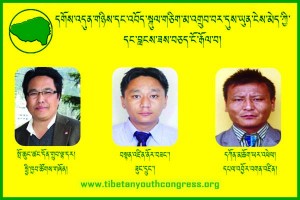
www.studentsforafreetibet.org against Chinas „Re – Education Programme“ and for Human Rights 4 All
- www.tibetoralhistory.org
- Save Mountain Minorities, Tibetan Nomads, Indigenous People <
- www.uranium-network.org www.minesandcommunities.org
- http://stopminingtibet.com www.meltdownintibet.com
- Nuclear Safety: http://www.barentsobserver.com/index.php?cat=156838
- IPPNW Int. Physicans to prevent Nuclear War at fb <
- Meet International friends of Tibetan Youth Congress at fb <
- Meet Students for a free Tibet at fb <
- http://www.amnesty.org/en/economic-social-and-cultural-rights <
- Meet Human Rights Watch International at fb <
March 10, 2011: Because I Am Tibetan
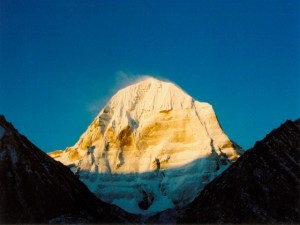
www.studentsforafreetibet.org/March 10
The environment in the People’s Republic of China has traditionally been neglected as the country concentrates on its rise as an economic power. Despite a recent interest in environmental reform, pollution has made cancer the leading cause of death in 30 cities and 78 counties, the Ministry of Health says. Only 1 percent of the countryâs 560 million city inhabitants (2007) breathe air deemed safe by the European Union. Chinese industry scores very poorly in energy efficiency. READ MORE > HERE <
Human rights in the People’s Republic of China are a matter of dispute between the Chinese government and other countries and NGOs. Organizations such as the U.S. State Department, Amnesty International, and Human Rights Watch have accused the Chinese government of restricting the freedoms of speech, movement, and religion of its citizens. The Chinese government argues for a wider definition of human rights, to include economic and social as well as political rights, all in relation to national culture and the level of development of the country. In this regard, China says, human rights are being improved in China. Read More: > HERE <
Statement of His Holiness the Dalai Lama on the 52nd Anniversary of the Tibetan National Uprising Day 10 March 2011 –Â Today marks the 52nd anniversary of the Tibetan peopleâs peaceful uprising of 1959 against Communist Chinaâs repression in the Tibetan capital Lhasa, and the third anniversary of the non-violent demonstrations that took place across Tibet in 2008. On this occasion, I would like to pay tribute to and pray for those brave men and women who sacrificed their lives for the just cause of Tibet. I express my solidarity with those who continue to suffer repression and pray for the well-being of all sentient beings.
For more than sixty years, Tibetans, despite being deprived of freedom and living in fear and insecurity, have been able to maintain their unique Tibetan identity and cultural values. More consequentially, successive new generations, who have no experience of free Tibet, have courageously taken responsibility in advancing the cause of Tibet. This is admirable, for they exemplify the strength of Tibetan resilience.
This Earth belongs to humanity and the Peopleâs Republic of China (PRC) belongs to its 1.3 billion citizens, who have the right to know the truth about the state of affairs in their country and the world at large. If citizens are fully informed, they have the ability to distinguish right from wrong. Censorship and the restriction of information violate basic human decency. For instance, Chinaâs leaders consider the communist ideology and its policies to be correct. If this were so, these policies should be made public with confidence and open to scrutiny. Read More: > HERE <
Video & Audio | The Office of His Holiness The Dalai Lama http://t.co/60LoupD Statement of His Holiness the Dalai Lama on the 52nd anniversary of the Tibetan national uprising day on March 10th, 2011
6th School Students Workshop on Tibetan Democracy in Exile and Situation of Tibet – The Tibetan Parliamentary and Policy Research Centre based in New Delhi, funded by the National Endowment for Democracy (NED) and International Campaign for Tibet (ICT) successfully concluded a 8 day long 6th An objective and practical program for school students titled: Introducing the Tibetan Democracy in Exile and Situation of Tibet at Staff Mess, Gangkyi in Dharamsala from December 24 ââŹâ 31, 2009. The workshop was attended by 90 students and 14 teachers from 19 different schools and institution.
The main objective of this workshop was to introduce students about the Tibetan democracy in exile and situation of Tibet. To make the students understand thoroughly the structure and functions of Tibetan exile government based in Dharamsala. It also aimed at helping the Tibetan students to have a better knowledge about the achievements, failure and the future prospects of the three pillar of democracy in the exile Tibetan governance and making them more responsible Tibetans. To make the students understand about the current political situation and present human rights situation inside Tibet. To impart the importance of maintaining the religious and moral ethos to preserve the Tibetan identity. Read More: > HERE <
- www.ecobuddhism.org
- http://stopminingtibet.com/
- www.hrw.org/asia/china
- www.tibetnetwork.org/amnesty50th
- http://www.meltdownintibet.com/questions.htm
- Meet Students for a free tibet Canada, friends fans at fb <
- Meet Students for a free tibet, friends, fans at fb <
- Meet International Rivers, friends, fans at fb <
- Meet Human Rights Watch, friends, fans at fb <
- Meet The International Ecotourism Society (TIES), fans at fb <
- http://www.circleofblue.org/waternews/himalayas/
- http://www.chinadialogue.net/UserFiles/File/third_pole_full_report.pdf
As the Himalayan glaciers disappear, ten major Asian river systemsâthe Amu Darya, Indus, Ganges, Brahmaputra, Irrawaddy, Salween, Mekong, Yangtse, Yellow, and Tarimâare threatened. Twenty percent of the worldâs population faces a future of catastrophe, according to a report released by University College, Chinadialogue, and Kingâs College of London in May 2010.
CONFERENCE: The City of Kashgar
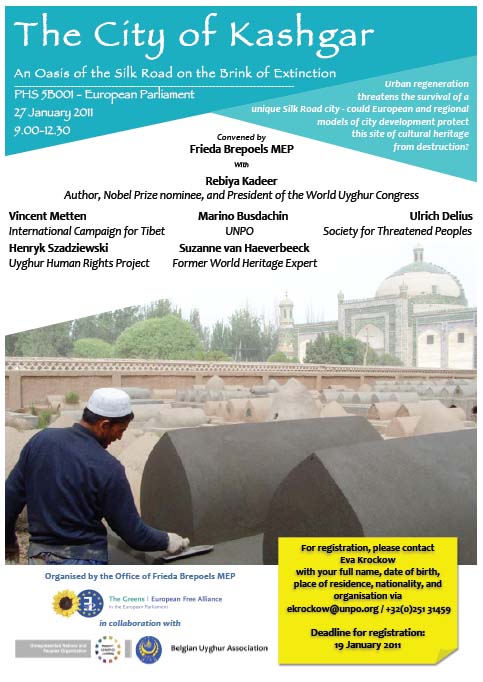
www.rferl.org Radio Free Europe
The Silk Road (or Silk Routes) is an extensive interconnected network of trade routes across the Asian continent connecting East, South, and Western Asia with the Mediterranean world, as well as North and Northeast Africa and Europe. In recent years, both the maritime and overland Silk Routes are again being used, often closely following the ancient routes.Read More: > HERE <
The Uyghur (Uyghur: ŘŚŰŮŘşŰŘąâ, ULY: Uyghur; simplified Chinese: çť´ĺžĺ°; traditional Chinese: çśĺžçž) are a Turkic ethnic group living in Eastern and Central Asia. Today, Uyghurs live primarily in the Xinjiang Uyghur Autonomous Region in the People’s Republic of China. An estimated 80% of Xinjiang’s Uyghurs live in the southwestern portion of the region, the Tarim Basin. The largest community of Uyghurs outside Xinjiang in China is in Taoyuan County, in south-central Hunan province.Outside of China, large diasporic communities of Uyghurs exist in the Central Asian countries of Kazakhstan, Kyrgyzstan, and UzbekistanSmaller communities are found in major cities in Afghanistan, Pakistan, and Turkey. Read More: > HERE <
The City of Kashgar: An Oasis of the Silk Road on the Brink of Extinction – Two years into Beijingâs âKashgar Dangerous House Reformâ, and the Old City of Kashgar in East Turkestan, or Chinaâs Xinjiang Uyghur Autonomous Region (XUAR), faces near total destruction.
There is a pressing need to assess the damage incurred, implications for the regionâs Uyghur population, and to identify ways in which damage can be mitigated.
To address this urgent need, Ms Frieda Brepoels MEP will convene a conference, âKashgar: An Oasis of the Silk Road on the Brink of Extinctionâ at the European Parliament in Brussels from 9.00â12.30 on 27 January 2011 in collaboration with the Unrepresented Nations and Peoples Organization (UNPO) and the Belgian Uyghur Association. For more information on the event please refer to http://www.unpo.org/article/12104
After opening remarks by Rebiya Kadeer, Nobel Peace Prize nominee and President of the World Uyghur Congress, international experts including Henryk Szadziewski, Manager of the Uyghur Human Rights Project, Washington, and Ulrich Delius, German Society for Threatened Peoples, will provide a rare glimpse into one of the defining cultures of Central Asia and an internationally significant Silk Road city that has witnessed Tamerlane, Genghis Khan and Marco Polo but is excluded from applications for UNESCO World Heritage status due to political reasons.
In the keynote address for the Oslo Freedom Forum 2010, Uyghur leader Rebiya Kadeer reveals the plight of her people under the repressive Chinese government. Like the Tibetans, the Uyghurs are living in an open prison, forced to abandon their culture, subjected to torture, imprisonment, and execution for speaking out.
Drawing on the historical lessons taught by the international case studies of Lhasa and Bruges, Vincent Metten, EU Policy Director of the International Campaign for Tibet, and Suzanne van Haeverbeek, former Flemish world heritage expert, will discuss how international intervention may prevent Kashgarâs further destruction and avoid the total and irreversible loss of a unique site of cultural and architectural heritage.
www.wsk.at Vienna Boy´s Choir www.uyghurensemble.co.uk
Yoga of Himalayas – Nuns & Communities
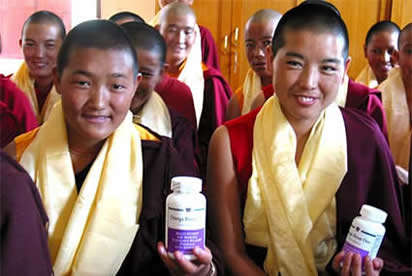
www.muktinath.org Chumig Gyatsa
Nepal (नŕĽŕ¤Şŕ¤žŕ¤˛) (/nÉËpÉËl/ Nepali: नŕĽŕ¤Şŕ¤žŕ¤˛ ), officially the Federal Democratic Republic of Nepal, is a landlocked country in South Asia. It is located in the Himalayas and bordered to the north by the People’s Republic of China, and to the south, east, and west by the Republic of India. With an area of 147,181 square kilometres (56,827 sq mi) and a population of approximately 30 million, Nepal is the world’s 93rd largest country by land mass and the 41st most populous country. Kathmandu is the nation’s capital and the country’s largest metropolis. Nepal has a rich geography. The mountainous north has eight of the world’s ten tallest mountains, including the highest point on Earth, Mount Everest, called Sagarmatha in Nepali. It contains more than 240 peaks over 20,000 ft (6,096 m) above sea level. The fertile and humid south is heavily urbanized. Read More: > HERE <
The Tibetan Nuns Project is a non-profit organization dedicated to educating and supporting nuns in India from all Tibetan Buddhist lineages. It supports nuns interesting in study and higher ordination. Tibetan nunneries have historically been well established in Tibet, certainly from the 12th century and with traditions reaching back as far as the eighth century. Before the Chinese invasion in 1949, there were at least 818 nunneries and nearly 28,000 nuns living in Tibet. Traditional education in the nunneries included reading, writing, and lessons in ancient scriptures and prayers taught by the senior nuns or lamas from monasteries. Read More: > HERE <
The vision behind the Pundarika lotus symbol is the immaculate wisdom and compassion of Dharma. It is Pundarikaâs hope to manifest this vision by bringing the timeless wisdom of great Tibetan masters to the modern West.
Under the guidance of Tsoknyi Rinpoche, Pundarika Foundation was established in 1994 as a 501(c)(3) nonprofit religious organization and as a 501(c)(3) church in 2006 (FEIN No. 84-1295990). Pundarika is a volunteer organization that relies on the generosity of studentsâ time and commitment. It has the support of over 2,000 students throughout the world who attend retreats, practice Dharma under the inspiration of Rinpoche and contribute time, money and prayers to its success.
Missions and Goals: „You can awaken a sense of responsibility for all the other sentient beings who are exactly the way you used to be, tormented by negative emotions. You can begin helping them–first one, then two, then three and finally all sentient beings.“ Tsoknyi Rinpoche
Pundarika Foundationâs primary mission is to support the teaching activities and humanitarian work of Tsoknyi Rinpoche by: Keeping alive the wisdom of the Dharma, Sustaining practitioners who preserve the teachings of the Buddha as a vital tradition, Helping people experience inner peace, to better face the challenges of modern life with compassion and sanity, ~For Recent Accomplishments, please click here ~

Produced by Chariot Videos – www.chariotvideos.com . Blessings tells the story of 3000 nuns living in the remote nomadic region of Nangchen in Eastern Tibet who practice an ancient yogic tradition of Tibetan Buddhism. Despite near extinction during the destruction of the Cultural Revolution, these remarkable practitioners have emerged to rebuild their monasteries by hand.. stone by stone. Now, their wisdom tradition is once again vital and growing. In 2005, Tsoknyi Rinpoche III led a small group of western students to meet these amazing women. Narrated by Richard Gere www.gerefoundation.org/, with music by Ani Choying Drolma and Steve Tibbetts, Blessings is the story of this extraordinary journey.
Rinpocheâs first visit to Chumig Gyatsa led to the immediate construction of 10 small rooms. Since then, their nunnery has been repaired and enlarged, and the nuns were able to perform a full Buddhist ritual practice for the first time. Twenty young girls were ordained and joined the community. Today, the 51 nuns divide their time between Kathmandu and Muktinath. Also, a health clinic (Chumig Gyatsa Gargon Abbey and Clinic) was constructed that serves the nuns and the local community. This year, a new large shrine hall is being constructed.
Ancient practices leading to enlightenment – The nunsâ story is a classic example of dedication and tenacity. Organized in nunneries comprised of several âAni housesâ (dwellings where up to 15 nuns live together), they perform their spiritual practices in a group, teaching and helping each other all their lives. Many nuns do three-year, nine-year or even lifetime retreat. On retreat, each nun sits all day in meditation posture doing her yogic practices and meditation.
The nunsâ daily routine captures a timeless scene from the past. A typical day starts around 3:30 a.m., as the nuns wake and immediately start their first three-hour practice session. After a short break for breakfast, they resume their second session, ending at lunch. The third session occupies the afternoon, and after a light evening meal, they complete their fourth practice session. They then continue sitting throughout the night, practicing dream yoga.
Many of the nuns are accomplished masters of difficult yogic practices such as tummo (the yoga of inner heat). They perform yearly rituals for the public that include a long procession around the center in the dead of winter in sub-zero temperatures, with only a sheet wrapped around their bodies. During the night, hundreds of the most adept nuns wet their sheets repeatedly in buckets of melted snow and continue their procession, drying the sheets again and again with the inner heat generated by their yogic practice.
This very rare and awe-inspiring event, as well as the realization of the elder nuns, has gained them respect and renown throughout Tibet. In a culture where female practitioners have struggled to gain respect, these nuns have risen to a high level of status, with many monks and lamas seeking their teachings and instruction.

 * Tsoknyi Nangchen Nun at Gebchak Gonpa *
The nuns also serve the community through spiritual support and counseling, giving love, compassion and emanating peace directly into peopleâs minds. This is a tangible example of the power of spiritual influence.
„Love and compassion are necessities, not luxuries. Without them humanity cannot survive.“ ~ H. H. the Dalai Lama
The values that nuns haveâpeace, love and compassionâaffect an entire community and continue to branch out to the rest of the world. In summary, the nuns‘ lives exemplify the power of living Dharma and its realization to transform the hearts and minds of the surrounding communities.
- www.developmentwatch.net
- www.minesandcommunities.org http://stopminingtibet.com
- http://amuletforums.com/archive/offering-15-000-sangha-t2686.html
- Meet Tibetan Nuns Project, studies, friends, fans at fb <
- Meet International Ecotourism Society, fans at fb <
- Meet International Impact Assessment IAIA at fb <
- Meet Book of Tibetan Medicine at fb <
- Meet Human Rights Watch, friends, fans at fb <
- Meet UNESCO World Heritage, friends, fans at fb <
- Meet Millenium Goals friends, fans at fb < www.endpoverty2015.org
Â
Save Biodiversity – Herbs & Food Regulation
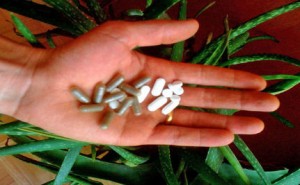
www.gmcontaminationregister.org www.un.org/humanrightsday/2010
www.anh-europe.org/freedom-health-choice
www.saveourherbs.org.uk/Petition.html
The Traditional Herbal Medicinal Products Directive, 2004/24/EC, was established to provide a regulatory approval process for herbal medicines in the European Union (EU), and came into force on 30 April 2004 . Previously, there was no formal EU wide authorisation procedure, so each EU member stated regulated these types of products at the national level. Under this regulation, all herbal medicinal products are required to obtain an authorisation to market within the EU. Those products marketed before this legislation came into force can continue to market their product until 30 April 2011, under the transitional measures defined in the Traditional Herbal Medicinal Products Directive. Once this time limit has expired, all herbal medicinal products must have prior authorisation before they can be marketed in the EU. Read More: > HERE <
Ayurveda (Sanskrit: ŕ¤ŕ¤ŻŕĽŕ¤°ŕĽŕ¤ľŕĽŕ¤Ś; Äyurveda, the „science of life“) or ayurvedic medicine is a system of traditional medicine native to India and practiced in other parts of the world as a form of alternative medicine.In Sanskrit, the word ayurveda consists of the words Äyus, meaning „longevity“, and veda, meaning „related to knowledge“ or „science“.Evolving throughout its history, ayurveda remains an influential system of medicine in South Asia.The earliest literature on Indian medical practice appeared during the Vedic period in India.The SuĹruta SaášhitÄ and the Charaka SaášhitÄ were influential works on traditional medicine during this era.Over the following centuries, ayurvedic practitioners developed a number of medicinal preparations and surgical procedures for the treatment of various ailments and diseases. Read More: > HERE <
Health Choice – Have you heard the hype about future restrictions on natural health products? Find out how the ‚boil-the-frog-slowly‘ method masterminded by governments and transnational corporations is out to restrict YOUR FREEDOM OF CHOICE in the area of natural healthcare.
Read on…… find out here what’s really going on. This is about your future, and that of the next generation. Where in the world are restrictions most imminent?
> European Union (EU) – Canada – United States of America (USA) – New Zealand <
As a consequence of moves to harmonise global food laws, concerted attempts to control consumer access to natural heath products are being made by governments and trans-national corporations.
At a global level the regulatory framework is being developed through the Codex Alimentarius Commission (see our Codex campaign page).
The system of control essentially moves natural health products from a category of food to products requiring pre-market authorisation, where the authorisation systems being used or proposed are very onerous and so lock out large numbers of products (e.g. around 50% of pre-2004 products in Canada).
All this is being enacted under the often conflicting guises of âconsumer protectionâ and ‚free trade‘, nearly always creating a situation where big business gets what it wants while our freedom to choose natural health products is dramatically curtailed.
Inappropriate EU legislation could effectively steam-roller ancient and effective medicine cultures, such as Ayurveda, out of existence.
Certain combinations of herbal products, and those containing significant levels of vitamins and minerals, will be prohibited.
The EUâs Human Medicinal Products Directive (HMPD), issued ostensibly to protect consumers from medical disasters such as the thalidomide tragedy, now has a scope so broad that it can be used to classify certain foods, herbs and nutrients â even water â as drugs.
Many herbal products would be evaluated by inappropriate pharmaceutical criteria, rather than by practicing medical herbalists and others with specific expertise in the field of traditional medicines.
The cost of complying with these pharma-friendly criteria will be prohibitively expensive for many small to medium size enterprises and there could be serious consequences for small herb-producing farmers and communities in non-EU countries.
As you may know The Traditional Herbal Medicinal Products Directive 2004/24/EC (THMPD) of the European Union will have long-term and far-reaching implications for Ayurveda and other Traditional Systems of Medicine (TSMs), specially for the manufacturers and practitioners of these systems. / Senate Bill S510 Makes it illegal to Grow, Share, Trade or Sell Homegrown Food — Section 510(k) and the device approval process. Food Freedom warns about the consequences from this bill.
Jede(r) von uns benutzt im täglichen Leben Heilpflanzen in Form von Tees, chinesische, ayurvedische Mittel, Kräutermischungen etc. Dies soll alles verboten werden! Lest selbst: Ab April 2011 soll das Gesetz für Nahrungsergänzungsmittelund Heilkräuter (THMPD – Traditional Herbal Medical Product Directive) EU-weit durchgesetzt werden.
Das bedeutet:Die auf Teemischungen basierende Kräuterheilkunde wäre dannwahrscheinlich um die Hälfte der dort eingesetzten Kräuter beraubt, da es wenig „wissenschaftliche Forschung“ über gebräuchliche, einheimische Kräuter gibt und diese dann ohne aufwändige Forschung keine Zulassung alsArzneimittel bekämen.
Fast alle chinesischen und ayurvedischen Heilpflanzen und ein guter Teil der europäischen Heilpflanzen sollen mit dieser EU-Novelle verboten undaus dem Handel genommen werden.
Die Gründe liegen auf der Hand: Die Pharmaindustrie hätte dieNaturheilkunde „Schachmatt“ gesetzt und könnte diesen wachsenden Marktfür sich übernehmen.Jetzt sind wir alle gefragt und können noch Einfluss nehmen.In Deinem, Ihrem, Eurem und unserem Interesse.

www.sourcewatch.org/Global_Corporations
-
www.abtei-st-hildegard.de ( WHO owns Hildegard ? )
Korean Buddhism Jogye 2012 Conference
 
 www.ohchr.org/HRDay2010.aspx www.hrw.org/north-korea
www.attacreport.com/concentration camps
 www.wfp.org/countries/Nkorea
www.buddhachannel.tv/Won Buddhism
Korean Buddhism is distinguished from other forms of Buddhism by its attempt to resolve what it sees as inconsistencies in Mahayana Buddhism. Early Korean monks believed that the traditions they received from foreign countries were internally inconsistent. To address this, they developed a new holistic approach to Buddhism. This approach is characteristic of virtually all major Korean thinkers, and has resulted in a distinct variation of Buddhism, which is called Tongbulgyo („interpenetrated Buddhism“) by Korean scholars. Korean Buddhist thinkers refined their predecessors‘ ideas into a distinct form. Korean Buddhism has also contributed much to East Asian Buddhism, especially to early Chinese, Japanese, and Tibetan schools of Buddhist thoughts. Read More: > HERE <
The Jogye Order, officially the Jogye Order of Korean Buddhism (ëíëśęľěĄ°ęłě˘ , 大éä˝ć ćšćşŞĺŽ) is the representative order of traditional Korean Buddhism with roots that date back 1,200 years to Unified Silla National Master Doui, who brought Seon (known as Zen in the West) and the practice taught by the Sixth Patriarch, Huineng, from China about 820 C.E. In 826, the „Nine Mountains of Seon“ adopted the name „Jogye-jong“ and all were instrumental in the development of the nation during Unified Silla and thereafter. During Goryeo, National Masters Bojo Jinul and Taego Bou led major Seon movements. The Jogye Order was thus established as the representative Seon order until the persecution of the Joseon Dynasty. Read More: >HERE<
Korea (Korean: íęľ Hanguk [hanÉĄuËk] or 쥰ě Joseon [tÉosĘn] â South and North Korea, respectively (cf. etymology)) is a territory of East Asia that was formerly unified under one state, but now divided into two separate states and a region in northeastern Asia. Located on the Korean Peninsula, it is bordered by China to the northwest, Russia to the northeast, and is separated from Japan to the east by the Korea Strait and the Sea of Japan (East Sea).
Korea was united until 1948, when it was split into South Korea and North Korea. South Korea, officially the Republic of Korea, is a free market, democratic and developed country, with memberships in the United Nations, WTO, OECD and G-20 major economies.
 North Korea, officially the Democratic People’s Republic of Korea, has a centrally planned industrial economy, with memberships in the United Nations, ISO, Non-Aligned Movement, ASEAN Regional Forum (ARF), and other international organizations. Read More: >HERE <
The 2012 World Fellowship of Buddhist Conference will be held in Korea hosted by the Jogye Order. The decision came during the 25th WFB Conference on November 13 in Colombo, Sri Lanka.
The 26th WFB Conference will be organized by the Jogye Order and the Jogye Orderâs Central Council of the Laity. The plan is to have the conference coincide with the 2012 World Expo in Yeosu City and the very popular Lotus Lantern Festival.
Director of Social Affairs Ven. Hyegyeong said, âThe reason for coinciding the conference with the expo and the Lotus Lantern Festival is that it would be a good way to show the world the beauty and richness of Korean Buddhist tradition and to promote Korean Buddhism. We will have a tentative six-day visit plan with half the time spent in Yeosu City and the conference, and the other days to see the Lotus Lantern Festival.â
Jogye Order plans to make strong efforts in seeing the conference to be successful. In this way, the success can be carried over to the 2013 World Religious Leaders Conference, also hosted by the Jogye Order.
The WFB first began in May of 1950 in Sri Lanka as Buddhist representatives from 27 countries met to transcend sectarian barriers. This year marks the 60 year anniversary. Now, 153 WFB branches in 40 countries exist to unify Buddhists from all traditions and uphold the Buddhaâs teachings. The conference is held every two years. There are seven WFB branches in Korea including the Jogye Order and the Jogye Order Central Council of the Laity.
Korea hosted the 17th WFB Conference in 1990 in Seoul. Now the conference returns after 22 years. The opportunity to host the WFB conference will be a chance to showcase the excellence of Korean Buddhism and share with the world Korean Buddhist cultural treasures such as templestay, temple food, and the Lotus Lantern Festival.
The 25th WFB Conference, with the theme âSolving Social Issues with Dharma,â was held on November 13 in Colombo. Along with the conference, a Board of Directors Meeting, a symposium, and the 60-year Commemoration Ceremony were held until November 17. More than 500 representatives from North Korea, Japan, China, Thailand, Taiwan, South Korea, and other countries attended this yearâs conference.
Documents the creation of a Buddhist painting by the Buddhist nun artist, Seol Min, who has dedicated her life to keeping the tradition of Buddhist painting alive. /Â The secret of Korean temple cooking popularity is in its eco-friendly and traditional recipes. Recently, a temple of Jogye Order of Korean Buddhism opens the restaurant for temple cooking. All the recipes are based on Jogye Order of Korean Buddhism, but its color and shape has been upgraded even for non-believers to enjoy its taste. Arirang Today will listen to the Buddhist nun, Dae-an, who has been putting an effort to achieve the internationalization of Korean cuisine in temple cooking.
The Democratic Peopleâs Republic of Korea (DPRK) continues to face regular, significant food shortages. A joint Food and Agricultural Organization (FAO) and World Food Programme Crop and Food Security Assessment Mission took place between September 21 and October 2 this year to assess the main cereal harvest and estimate the food gap for the marketing year 2010/2011.
The mission estimates that DPRK faces a cereal import requirement for the 2010/11 marketing year (Nov/Oct) of 867,000 metric tons.
The mission recommended that 305,000 tons should be provided as international food assistance to about five million of the most vulnerable people, including young children, their mothers, the elderly, and poor people in regions with high malnutrition. Planned commercial imports by the government (325,000 tons) and recommended food assistance do not fill the entire uncovered food deficit, and leave a gap of 237,000 tons. The gap will need to be filled by the DPRK government and direct assistance from other countries.
While malnutrition rates among children have decreased the last decade, one in every three children remains chronically malnourished or âstuntedâ, meaning they are too short for their age, and a quarter of all pregnant and breast-feeding women are also malnourished. The mission noted that a small shock in the future could trigger a severe crisis which would be difficult to contain if these chronic deficits are not effectively managed. One in four pregnant or breastfeeding mothers is also malnourished.
17 November 2010 – > North Korea Faces Serious Cereal Deficit, Food Shortages and Undernourishment to Continue
At the household level, assessments during 2008 and 2009 indicated a marginal improvement in food security. However, current rations provided by the DPRK government can meet less than half of the daily calorific needs for the 68% of the population receiving public food rations.
Most people struggle to make up the deficit through alternative means as they do not have the necessary purchasing power.
Mountain Minorities and Indigenous Peoples

NGO Development Projects Active in Tibet
About ICIMOD – The International Centre for Integrated Mountain Development, ICIMOD, is a regional knowledge development and learning centre serving the eight regional member countries of the Hindu Kush-Himalayas â Afghanistan, Bangladesh, Bhutan, China, India, Myanmar, Nepal, and Pakistan â and based in Kathmandu, Nepal.
Globalisation and climate change have an increasing influence on the stability of fragile mountain ecosystems and the livelihoods of mountain people. ICIMOD aims to assist mountain people to understand these changes, adapt to them, and make the most of new opportunities, while addressing upstream-downstream issues. We support regional transboundary programmes through partnership with regional partner institutions, facilitate the exchange of experience, and serve as a regional knowledge hub. We strengthen networking among regional and global centres of excellence. Overall, we are working to develop an economically and environmentally sound mountain ecosystem to improve the living standards of mountain populations and to sustain vital ecosystem services for the billions of people living downstream â now, and for the future.
International Mountain Day, celebrated on December 11, gives us an opportunity to reflect on the relevance of mountains for the world. This year the International Mountain Day theme focuses on indigenous peoples and other minorities living in the mountains. The purpose is both to highlight the threats and challenges faced by these communities, and to acknowledge the invaluable knowledge they have and the contributions they can make towards overcoming global challenges of poverty and loss of diversity in a rapidly changing world.
A majority of the worldâs indigenous women and men live in mountain regions, many on the margins of society and facing poverty and exclusion. The Hindu Kush-Himalayan region has some of the highest diversity of indigenous peoples and other minorities in the world. An ICIMOD report identified more than 600 living languages in the Himalayas, 400 spoken by less than 100,000 people. According to current forecasts, ninety per cent of all languages could disappear within 100 years. The loss of these languages not only erodes an essential component of a groupâs identity, it is also a loss to heritage for all humankind.
The UN General Assembly adopted the UN Declaration on the Rights of Indigenous Peoples in September 2007, marking an important step in international efforts to preserve the identity of indigenous peoples. However, implementation has a different speed and different levels of commitment in different countries.
In agricultural terms, mountains are often considered âmarginal landsâ, unsuitable for modern commercial farming which focuses on cultivation of single crop varieties for large markets. Indigenous mountain people and other mountain communities continue to use traditional practices and techniques including sophisticated terracing systems, water transportation and irrigation schemes, and a combination of pasture, forestry and farming practices. Indigenous women and men serve as custodians of this traditional knowledge on how to farm under difficult mountain conditions, and how to conserve important reservoirs of agricultural biodiversity.
They sustainably farm a wide variety of crops that are adapted to a range of different elevations, slope conditions, and micro-climates, and this knowledge will be of great, if as yet little noticed, value in the worldâs efforts to adapt to climate and other drivers of change. The autonomous adaptation practiced by mountain communities consists of community-based interventions that address underlying causes of vulnerability and reduce the risk of possible adverse impacts of climate change by building upon the existing rich indigenous knowledge base on adaptation to environmental change and helping to strengthen the resilience of the communities. Women especially play a critical role in gendered indigenous knowledge. Their roles and expertise have yet to be acknowledged, but has great potential for adapting to multiple drivers of change.
Indigenous mountain communities are connected to the land, the environment, and natural resources in ways that are often inextricably intertwined and therefore expressed in spiritual and socio-cultural terms. Respecting this worldview, and preserving the languages, music, artwork, folk tales, culture, meanings, and myths that express it, is critical for the survival of indigenous communities in mountain areas. This âintangible heritageâ also enriches the global community, providing inspiration and insights for realising a more sustainable relationship between humankind and the environment.
A scene from Tibetan Documentary „Leaving Fear Behind,“ shows a nomad school in Tibet (Amdo) working to preserve Tibetan Language and culture as it’s very existence is under threat from Chinese Government policies. Find out more: http://studentsforafreetibet.org Leaving Fear Behind: The Film the Chinese Government Doesn’t Want the World to See. // sumit sadhak practicing handstand in himalyas on the bank of ganga river one of the most important places for yogis.
The involvement of indigenous mountain communities is an important prerequisite for sustainable mountain development. Therefore, as governments work toward addressing mountain development priorities, it is critical that they live up to their commitments outlined in the UN Declaration on the Rights of Indigenous Peoples.
We hope that this yearâs International Mountain Day will help to increase awareness of the central role of Minorities and Indigenous Peoples for mountain development, and to motivate all citizens, policy makers, and development actors to recognise the importance of their contribution to sustainable development. We trust that the Day will encourage organisations to invite indigenous and traditional mountain communities to participate actively in national and international efforts to understand and adapt to the multiple drivers of change, including climate change, in the mountains of the world.
With best wishes, Andreas Schild http://www.icimod.org
Culture and Development – Placing culture at the heart of development policy constitutes an essential investment in the world’s future and a pre-condition to successful globalization processes that take into account the principles of cultural diversity. It is UNESCO’s mission to remind all States of this major issue.
As demonstrated by the failure of certain projects underway since the 1970s, development is not synonymous with economic growth alone. It is a means to achieve a more satisfactory intellectual, emotional, moral and spiritual existence. As such, development is inseparable from culture. Strengthening the contribution of culture to sustainable development is a goal that was launched in connection with the World Decade for Cultural Development (1988-1998). Ever since, progress has been made thanks to a corpus of standard-setting instruments and demonstration tools such as cultural statistics, inventories, regional and national mapping of cultural resources.
In this regard, the major challenge is to convince political decision-makers and local, national and international social actors to integrating the principles of cultural diversity and the values of cultural pluralism into all public policies, mechanisms and practices, particularly through public/private partnerships.
This strategy will aim, on the one hand, at incorporating culture into all development policies, be they related to education, science, communication, health, environment or tourism and, on the other hand, at supporting the development of the cultural sector through creative industries. By contributing in this way to poverty alleviation, culture offers important benefits in terms of social cohesion. Read more: http://portal.unesco.org/culture/en
The Challenge of Human Rights and Cultural Diversity – United Nations Background Note by Diana Ayton-Shenker:
The end of the cold war has created a series of tentative attempts to define „a new world order“. So far, the only certainty is that the international community has entered a period of tremendous global transition that, at least for the time being, has created more social problems than solutions.
The end of super-power rivalry, and the growing North/South disparity in wealth and access to resources, coincide with an alarming increase in violence, poverty and unemployment, homelessness, displaced persons and the erosion of environmental stability. The world has also witnessed one of the most severe global economic recessions since the Great Depression of the 1930s.
At the same time, previously isolated peoples are being brought together voluntarily and involuntarily by the increasing integration of markets, the emergence of new regional political alliances, and remarkable advances in telecommunications, biotechnology and transportation that have prompted unprecedented demographic shifts.
The resulting confluence of peoples and cultures is an increasingly global, multicultural world brimming with tension, confusion and conflict in the process of its adjustment to pluralism. There is an understandable urge to return to old conventions, traditional cultures, fundamental values, and the familiar, seemingly secure, sense of one’s identity. Without a secure sense of identity amidst the turmoil of transition, people may resort to isolationism, ethnocentricism and intolerance.
This climate of change and acute vulnerability raises new challenges to our ongoing pursuit of universal human rights. How can human rights be reconciled with the clash of cultures that has come to characterize our time? Cultural background is one of the primary sources of identity. It is the source for a great deal of self-definition, expression, and sense of group belonging. As cultures interact and intermix, cultural identities change. This process can be enriching, but disorienting. The current insecurity of cultural identity reflects fundamental changes in how we define and express who we are today. Read More: * HERE*
 